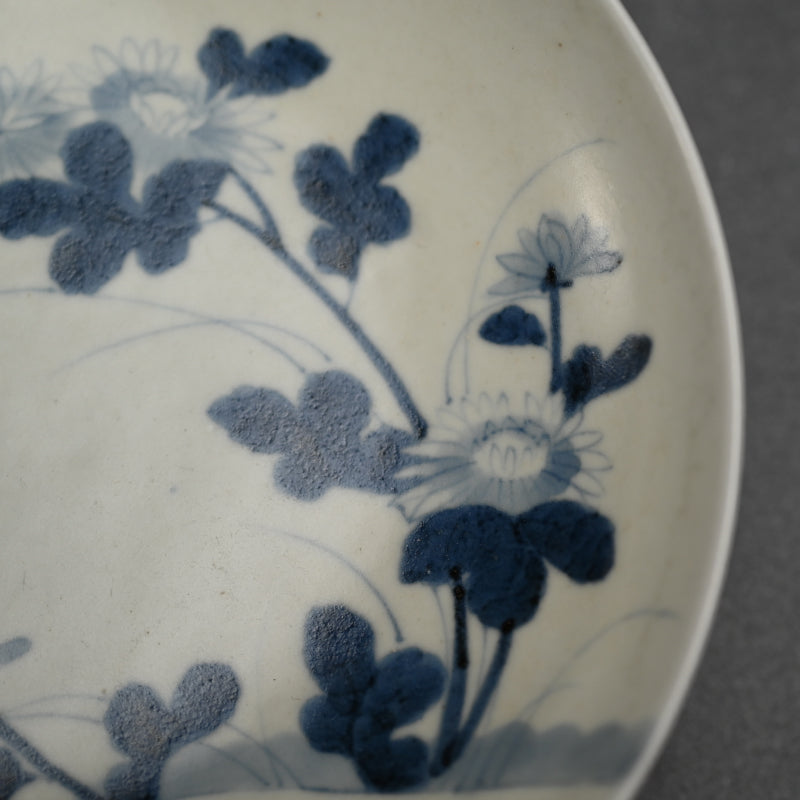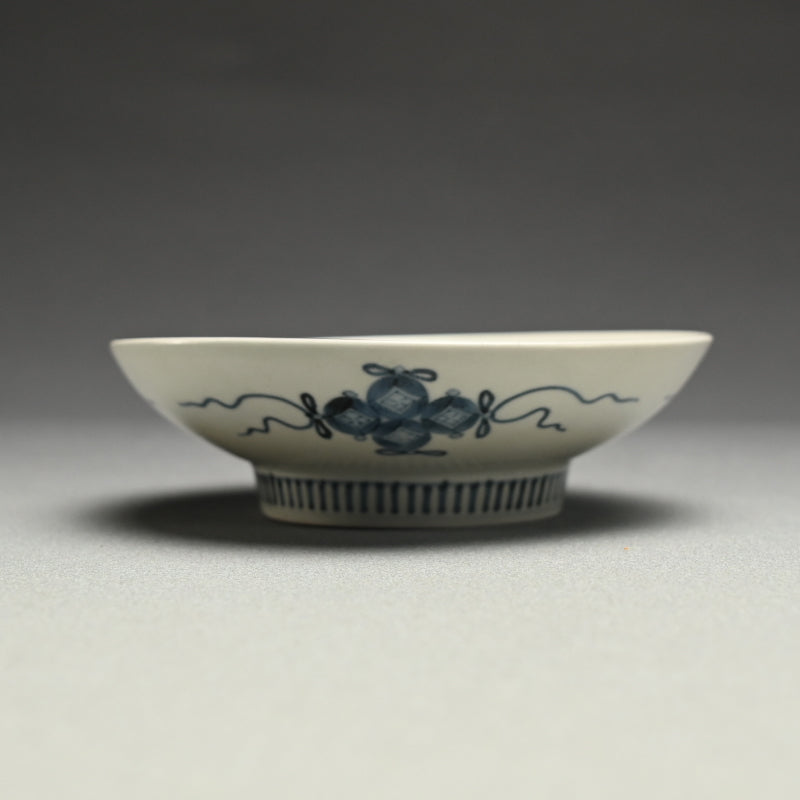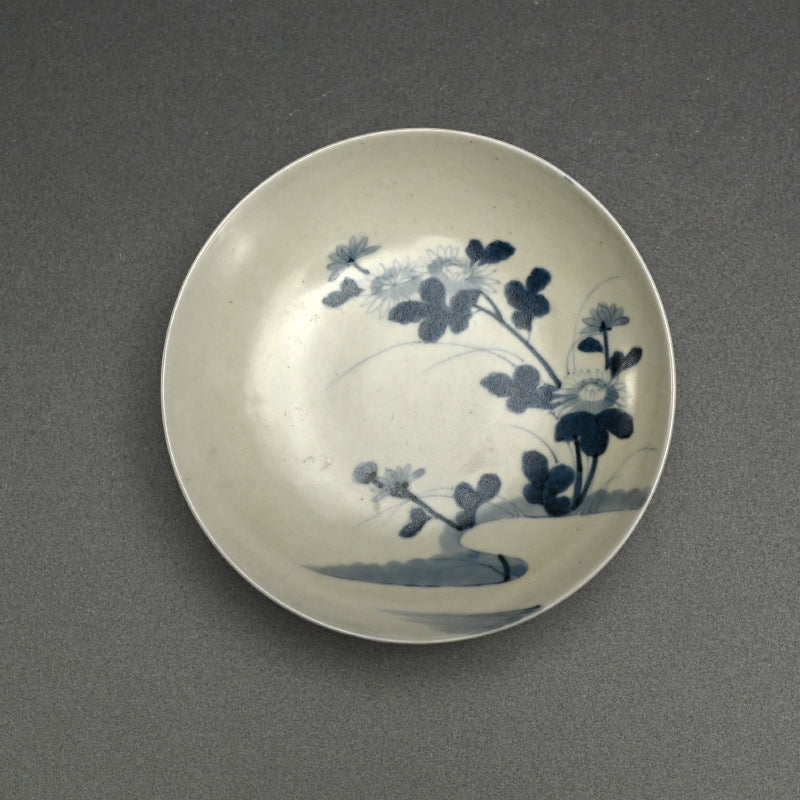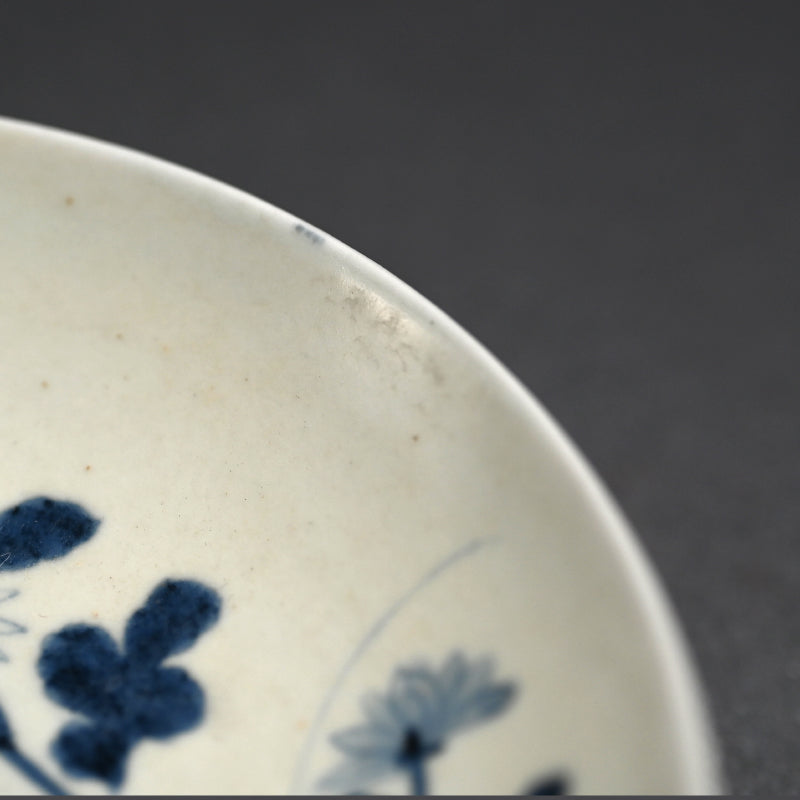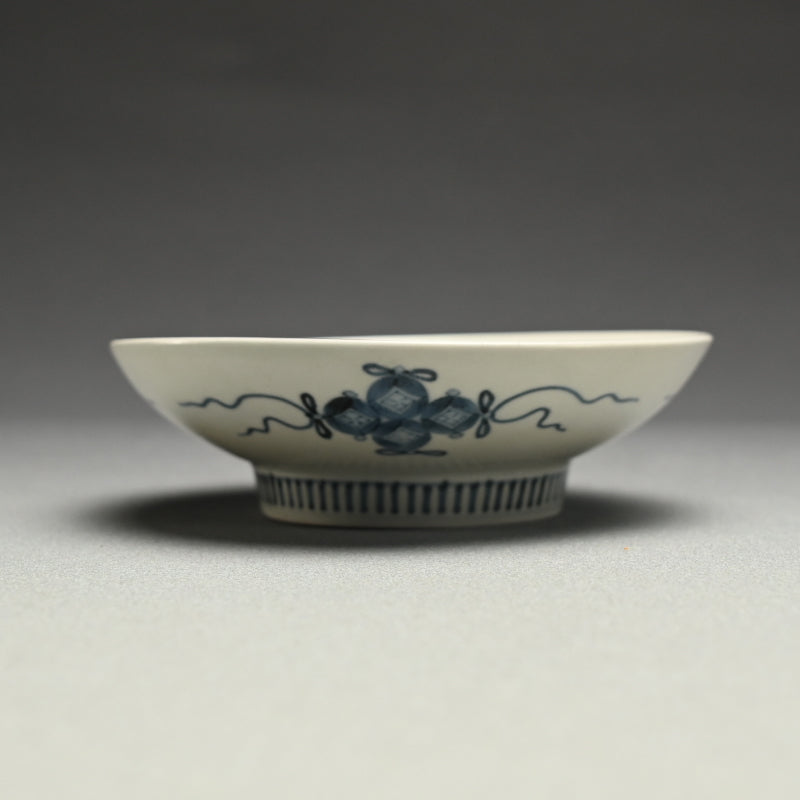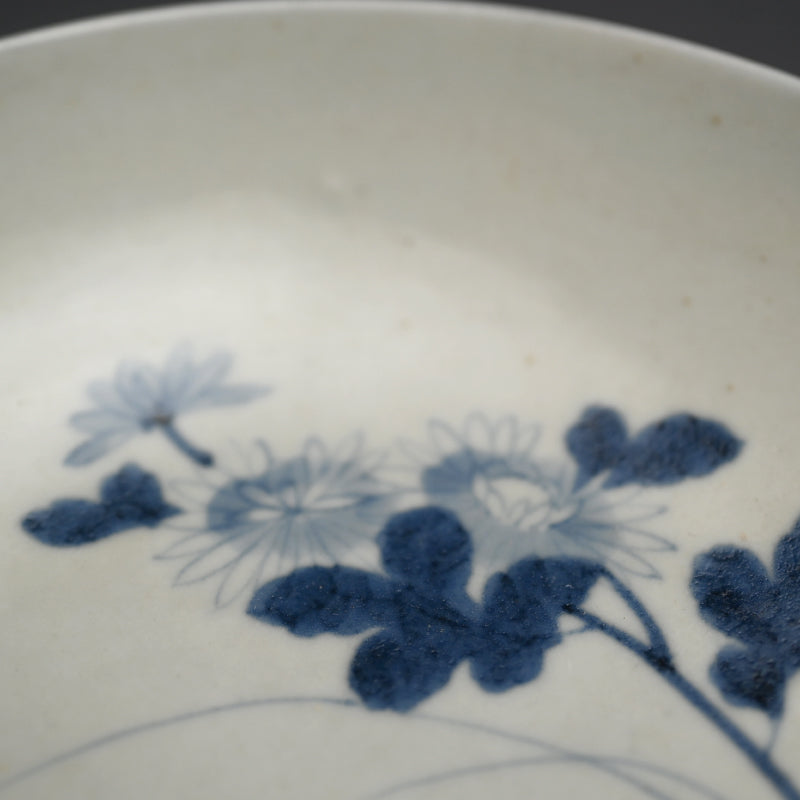Antique Japanese Hirado Porcelain Dish, Wild Chrysanthemum
Antique Japanese Hirado Porcelain Dish, Wild Chrysanthemum
Item Code: K506
Couldn't load pickup availability
A pale porcelain dish on a raised foot decorated with wild chrysanthemum (Ya-giku) from the kilns of Hirado on the Southern Island of Kyushu dating from the 19th century. It is 15.5 cm (6 inches) diameter, 4.5 cm (just less than 2 inches) tall and in excellent condition. It comes in a contemporary kiri-wood collectors box.
The story of Hirado porcelain begins with the Matsura clan, who ruled over the Hirado domain during the Edo period (1603-1868). The feudal lord Matsura Takanobu, played a pivotal role in the development of the industry. In the early 17th century, Takanobu, inspired by the burgeoning popularity of continental ceramics, sought to establish a local porcelain production center on the island. To realize his vision, he invited Korean potters, renowned for their expertise in ceramic artistry, to migrate to Hirado and share their knowledge. This influx of Korean artisans infused the local ceramic industry with new techniques, designs, and aesthetic sensibilities. Under the guidance of these Korean masters, Hirado kilns began producing exquisite porcelain wares that reflected both Korean influences and indigenous Japanese artistic elements. The early Hirado pieces often featured delicate forms, refined decoration, and a distinctive creamy white glaze that set them apart from other ceramic styles of the time. Hirado porcelain quickly gained favor among the Japanese aristocracy and became highly sought after for its exceptional craftsmanship and aesthetic appeal. Throughout the Edo era, Hirado porcelain flourished, enjoying patronage from feudal lords, samurai elites, and wealthy merchants. The Matsura clan's support and encouragement further fueled the growth of the local ceramic industry, leading to innovations in techniques and designs. In fact one of the defining characteristics of Hirado porcelain was its ability to adapt and incorporate various influences while maintaining its distinct identity. While initially inspired by Korean and Chinese ceramics, Hirado porcelain gradually evolved its own unique style, blending elements of traditional Japanese aesthetics with innovative approaches to form and decoration. This fusion of influences contributed to the allure and enduring appeal of Hirado porcelain both domestically and internationally.
Share

